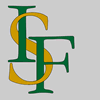Acarospora rosulata (Th. Fr.) H. Magn.
Göteb. Vetensk.-och Vitter.-Handl., ser. 4, 28, 2: 121, 1924. Basionym: Acarospora discreta f. rosulata Th. Fr. - Lichenogr. Scand., 1, 1: 218, 1871.
Synonyms:
Distribution:
Description: Thallus crustose, episubstratic, areolate-subplacodioid, pale chestnut brown to dark brown, somehow shiny, smooth, epruinose, forming orbicular to irregular, up to 7 cm wide, often confluent rosettes. Areoles round to angular, slightly convex, 0.5-2(-3) mm wide, up to 1.5 mm thick, becoming subsquamulose, the marginal ones often elongate and radiating, up to 1 mm long and <1 mm wide, the lower surface whitish to pale brown. Cortex paraplectenchymatous, 30-80 μm thick, reddish brown in upper part, colourless in lower part; algal layer 60-100 thick, continuous, but the algal cells sometimes arranged in vertical columns; medulla white, prosoplectenchymatous, up to 600 μm thick. Apothecia lecanorine, round to irregular in outline, subimmersed and punctiform, 0.1-0.4(-0.5) mm across, rarely expanded and up to 1 mm across, one to many per areole, with a rough, sometimes umbonate, dark brown to black disc, and a slightly raised thalline margin, rarely with a thin parathecial ring around the disc. Proper exciple of radiating hyphae, 20-40 μm wide laterally; epithecium dark brown to reddish brown, 10-20 μm high; hymenium colourless, (80-)100-120(-140) μm high; paraphyses rather lax in water, 1.5-2.5 μm thick at mid-level, the apical cells up to 4 μm wide; subhymenium up to 50 µm high; hypothecium 15-20 µm high. Asci >200-spored, clavate, the apical dome K/I-, 60-100 x 15-28 µm. Ascospores 1-celled, hyaline, narrowly ellipsoid, (3-)4-5(-6.5) x 1.5-2 μm. Photobiont chlorococcoid. Spot tests: K-, C+ pink, KC+ pink (best seen in sections under the microscope), P-. Chemistry: gyrophoric acid.Note: this species, described from Norway where it is rare, is known from western North America, Asia (Mongolia) and the French Alps. It grows on sun-exposed siliceous rocks, with optimum in dry, subcontinental areas, near or above treeline. To be looked for in the Italian Alps, especially in the inner, dry-warm Alpine valleys,
Growth form: Crustose
Substrata: rocks
Photobiont: green algae other than Trentepohlia
Reproductive strategy: mainly sexual
Subcontinental: restricted to areas with a dry-subcontinental climate (e.g. dry Alpine valleys, parts of Mediterranean Italy)
Commonnes-rarity: (info)
Alpine belt: extremely rare
Subalpine belt: extremely rare
Oromediterranean belt: absent
Montane belt: extremely rare
Submediterranean belt: absent
Padanian area: absent
Humid submediterranean belt: absent
Humid mediterranean belt: absent
Dry mediterranean belt: absent

Predictive model
Growth form: Crustose
Substrata: rocks
Photobiont: green algae other than Trentepohlia
Reproductive strategy: mainly sexual
Subcontinental: restricted to areas with a dry-subcontinental climate (e.g. dry Alpine valleys, parts of Mediterranean Italy)
Commonnes-rarity: (info)
Alpine belt: extremely rare
Subalpine belt: extremely rare
Oromediterranean belt: absent
Montane belt: extremely rare
Submediterranean belt: absent
Padanian area: absent
Humid submediterranean belt: absent
Humid mediterranean belt: absent
Dry mediterranean belt: absent

Predictive model
 Index Fungorum
Index Fungorum
 GBIF
GBIF


